Orchids are flowers that are extremely beautiful, but very demanding in terms of maintenance. This is especially true for orchids in pots, which many people like to grow at home.
However, even a pot for orchids needs to be chosen correctly so that they delight you with their flowering. Today we will tell you what pots should be for these flowers and how to properly care for them at home. You will also see photos of orchids grown on balconies or window sills in flowerpots.
Content
What should be the pot?
Orchids are among those types of flowers that do not grow in the ground, but attach to other plants. therefore pots for them should be selected so that they serve as a stand and support... If you choose it incorrectly, the root system will rot, and accordingly, the flower will die.
In natural conditions, orchids are strengthened on the trunks of trees, so their root system allows them to do. At home, this function is shifted to pots. They must have such a shape and structure so that the plant develops well., did not dry out and was not exposed to the negative effects of dry indoor air.
An orchid pot must be chosen from materials such as:
- glass;
- plastic;
- ceramics.
Also, the following conditions are put forward for pots for growing orchids:
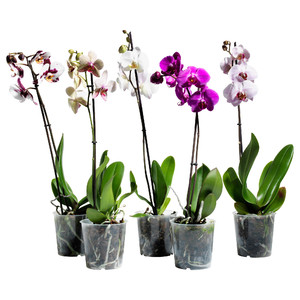 they must have a water drain;
they must have a water drain;- the presence of good aeration so that air flows to the rhizome;
- the volume of the pot and the size of the flower must match;
- the roots in the pot should be free and not touch the walls;
- the material of the container must maintain the optimum temperature and not overheat the flower;
- the container must be transparent so that the root system of the flower has access to sunlight.
Description of pots with photos
Below is a description of pots made of different materials. Some are shown in the photo.
Plastic containers for orchids
The most popular are plastic structures. The advantages of plastic are obvious:
- favorable cost;
- durable plastic;
- easy to clean;
- durable;
- transparent and transmits sunlight well.
Also, such a characteristic is good in that you can look at the root system of the orchid, and prevent it from starting to rot. In plastic pots, you can make additional holes on the walls or bottom for drainage.
Glass constructions
Many people prefer to use glass-based pots for growing orchids. They are also transparent and transmit light well. Compared to plastic containers, they have an external appeal and perfectly decorate the interior.... But they also have a minus - this is the impossibility of making holes for drainage.
It is better to use glass containers for experienced flower lovers, but for beginners it is recommended to take plastic vases. This is because the substrate in a glass container dries out unevenly, and the roots can rot. AND poor air exchange can cause algae to appear on the walls of the vessel... And only an experienced gardener can prevent this. Features of ceramic pots

But ceramic orchid pots are not particularly suitable. Very often, the roots of a flower grow to their walls, and this is very traumatic for them. And what toCeramics are often heavily covered with a glazed layer, causing clogging of porestherefore, the plant has no access to air. But if you settled on a ceramic pot, then take a planter for orchids, and put a plastic container inside.
The cost of finished pots depends on the following factors:
- material of manufacture;
- registration;
- the form.
The cheapest are plastic pots, the most expensive are ceramic pots.
DIY orchid pot
You can also make a pot for growing orchids yourself. To do this, you need to prepare a plastic base, for example, a food container. Choose the form yourself, but ohThe volume of the structure must match the size of the flower... In the bottom of the container, you need to make a large number of through holes with a knife, screwdriver or drill, it is also advisable to make them in the side walls of a homemade pot. From the inside, in the middle of the container, install a shampoo stopper so that the flower cannot adhere tightly to the bottom of the container and breathe better.
Preparing a substrate for a home orchid
You can buy ready-made orchid substrate from your specialist retailer. And you can do it yourself according to the instructions:
- prepare the pine bark by separating it from the trees;
- boil it for 20 minutes;
- dry;
- grind to the size you need.
If you soak such pieces of bark in fertilizer for a flower, it will bloom especially abundantly. For this purpose, we put the substrate under oppression and fill it with ready-made dressing. After a few hours, the bark must be removed and dried.... Then the plant can be transplanted.
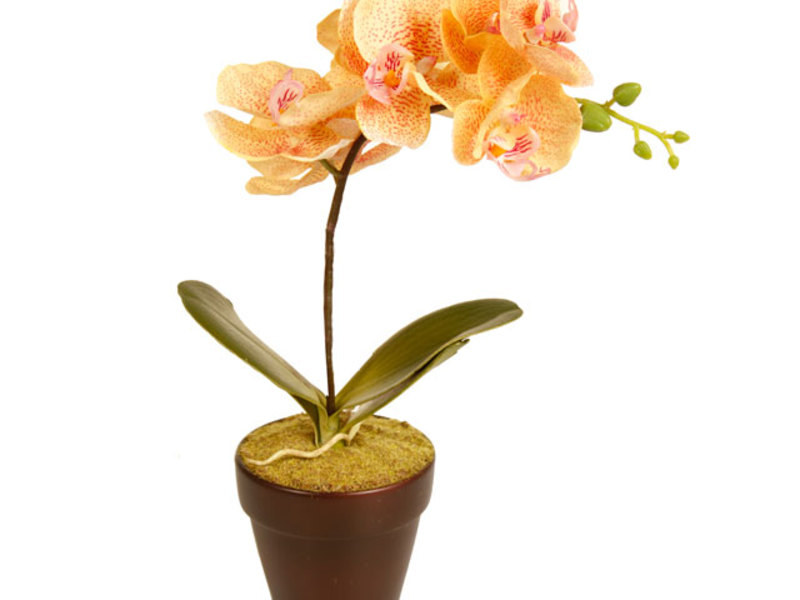
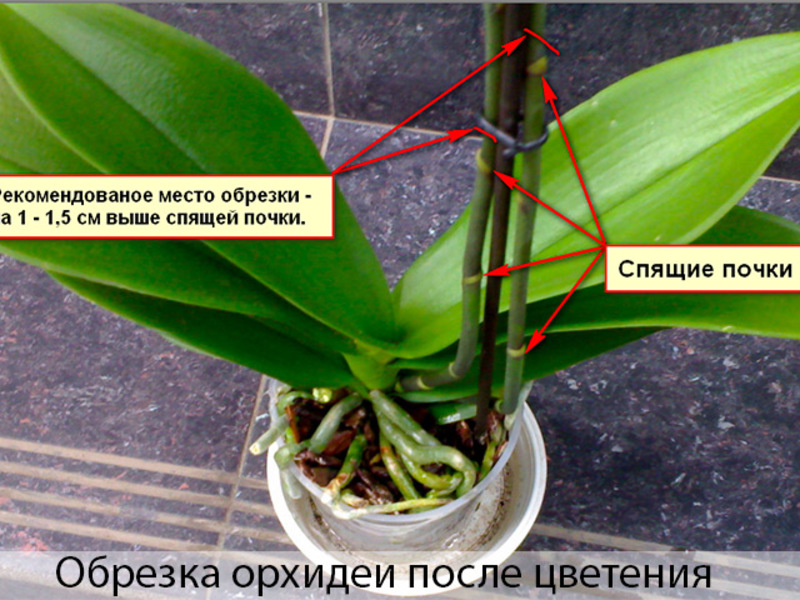
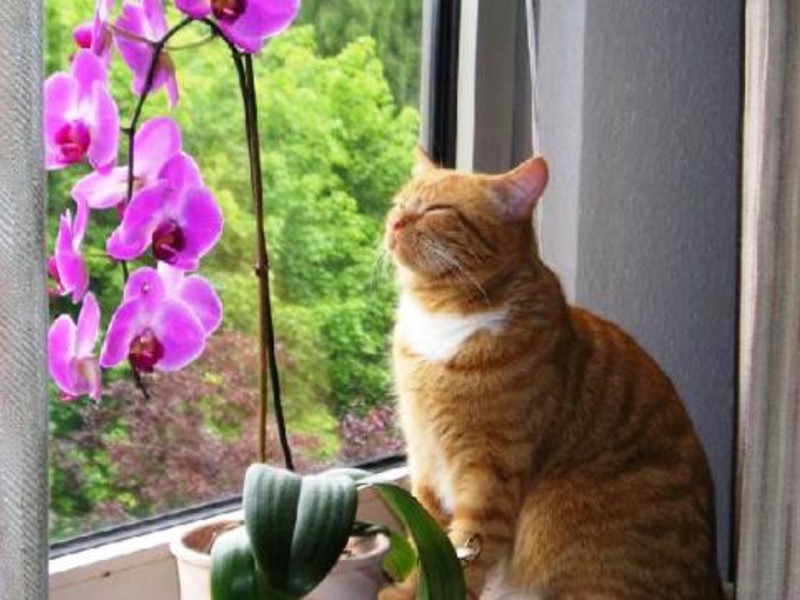
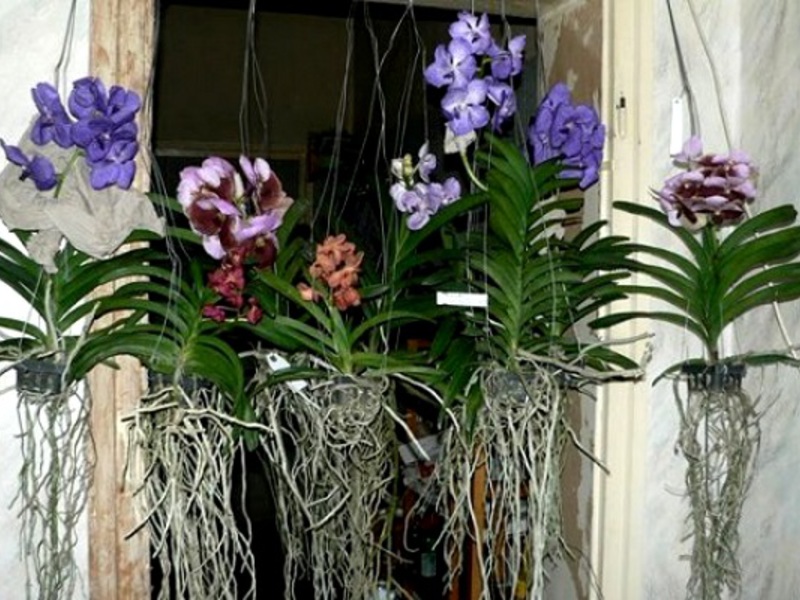
When you are just starting to grow orchids in pots, it is better to buy special soil mixtures for them at specialized retail outlets. The packages always say which varieties they are suitable for, you should always pay attention to this.
Well, for those who have been growing these flowers for several years, it will be interesting to try to prepare the soil on their own based on a substrate with the addition of dry moss and earth from the garden.
Orchid transplant
Sometimes it becomes necessary to transplant these flowers. In this case, you need to follow these rules:
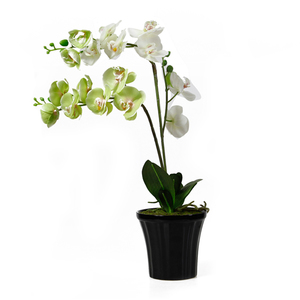 prepare a new flowerpot, which should be 2 cm larger in diameter than the previous one;
prepare a new flowerpot, which should be 2 cm larger in diameter than the previous one;- carefully remove the flower from the pot, taking care of the safety of its roots;
- carefully select the old substrate from the rhizome and discard it;
- look at the root system, take away rotten, old and damaged roots;
- those that remain are washed with warm running water;
- fill the new pot with a third of the substrate;
- we install a flower in it and straighten its roots;
- fills the free space with a substrate using a wooden stick.
After transplanting, the orchid can be watered only after five days, and fed only after a month.
Home orchid care rules
Remember to replant a flower only when you really need it. Moreover, it can be transplanted even during flowering. The orchid can be rearranged from one place to another, so that she herself chooses the one that is most comfortable for her..
Lighting
How you follow the rules for lighting a flower depends on how it will bloom and whether it blooms at all. If the orchid if there is not enough light, then she will have little nutrition for a full vegetation cycle, and if it is too intense, the flower will simply burn out.
Therefore, it is very important in this regard to find a "golden mean". If the flower has little light, then its leaves will acquire a dark green tint, and if there are too many, then they will either turn yellow or become covered with brown or dry spots.
Watering rules
Successful growth and flowering of orchids also depend on proper watering. In many ways, it all depends on the type of plant. Most orchids naturally are not in water and their roots cannot tolerate stagnant moisture and saline solutions.
Some varieties need the soil to be slightly moist, while others are such that the substrate for them must dry out between waterings.
Watering intensity also depends on the following factors:
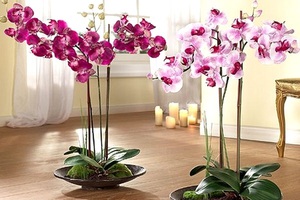 dry air;
dry air;- temperature;
- lighting intensity;
- pot size;
- vegetation phase.
It is worth noting that orchids are easier to tolerate lack of moisture than excess. They love intensive watering only during active growth, with the ejection of peduncles and flowering. And here it is necessary to reduce their number in the period after flowering and in winterwhen there is little light and the room is cool.
For watering orchids, you need to use only settled water, as an option - boiled or filtered. After the plant has faded, at the bottom you need to count two vines or three buds, and cut off the rest.
When the last flower is dropped, the plant must be given rest: transfer it to a semi-dark place and keep at a temperature of 24 degrees. During this period, you can not change the location of the plant and water it... Spraying of roots is sometimes allowed.
What should be the temperature for orchids?
Most varieties of these flowers feel great at home with temperatures ranging from 18 to 27 during the day and 13 to 24 at night, respectively.
Highly it is important to observe the difference in night and day temperatures for successful flowering. If the heating does not allow you to feel it, then it is necessary that the plant be cooler at night than during the day, such conditions must be created independently.
Moving orchids to cooler areas at night can create new flower stalks faster.
In most cases, orchids tolerate minor temperature fluctuations quite normally. But remember that when the temperature decreases, watering should be reduced, and with an increase - accordingly, increase.
Now you know what a pot should be for growing a beautiful and healthy orchid at home, and what you need to do for this in terms of care. If a follow all the rules and recommendations, the flower will delight you with its beauty.


